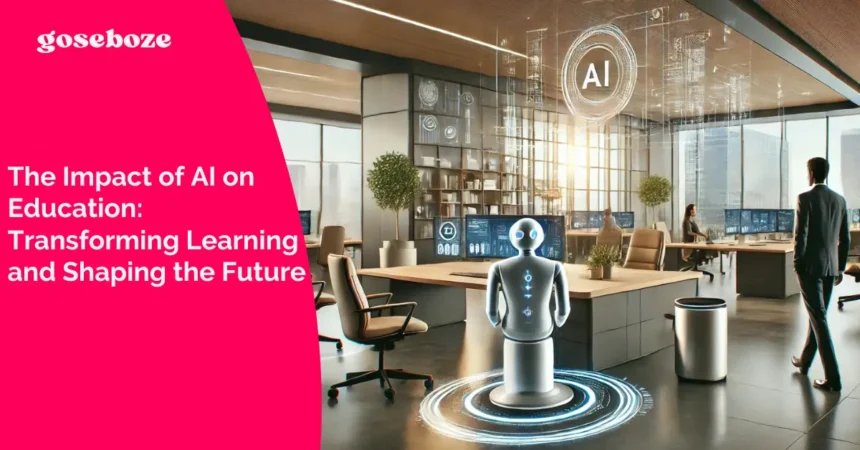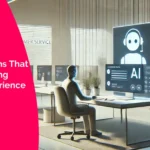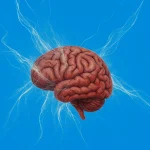AI has been a game-changer in education, and not just in the “Oh look, a robot is grading my paper” kind of way. We’re talking about AI shaking up classrooms, introducing new methods, and, yes, even erasing a few old-school jobs along the way.
It’s like inviting a super-smart guest to a dinner party—sure, they might dominate the conversation, but they also bring fascinating new perspectives. And let’s face it, AI’s presence in classrooms is here to stay.
How AI is Changing the Learning Game
AI is doing more than just automating tasks; it’s creating a system where education feels less rigid and more adaptive. Think of those online courses that get harder or easier based on your progress—yep, AI is behind that. It’s the engine that influences personalized learning and helps students find their strengths and work through challenges at their own pace.
But it’s not all about student customization or essay writing. AI is also taking over the boring stuff—like grading endless assignments or keeping track of administrative tasks. This frees up teachers to focus on what matters most: actual teaching. Imagine an AI tool that can give feedback on an essay draft at 2 AM or recommend study resources when you’re stuck on a concept. For anyone looking for that kind of help, a free essay checker can be a lifesaver. But enough about that, let’s talk about some of the key changes AI is bringing to education:
- Personalized learning paths. Forget those one-size-fits-all lessons. With AI, we’re talking about a unique learning system that adapts to each student’s pace and needs. AI is practically a tutor who actually knows what you don’t understand, instead of repeating the same explanation over and over again.
- Automating the boring stuff. Teachers have long had to juggle grading papers, managing administrative work, and, you know, actually teaching. AI can now handle tasks like grading multiple-choice questions, organizing timetables, and even offering feedback on essays. This shift lets educators focus more on teaching and less on paperwork.
- Making learning accessible everywhere. E-learning platforms have exploded in popularity, and AI is a big reason why. AI makes online learning feel less like struggling through a textbook and more like having a conversation with a mentor.
Machine Learning vs AI in the Classroom: What’s the Difference?
Before we get further into AI’s influence, let’s sort out this common confusion: AI vs machine learning. AI is the big picture, a system that simulates human thinking and reasoning (well, sort of). Machine learning, on the other hand, is like a diligent student within AI’s broader universe.
It learns from data, improves over time, and adjusts its methods. You can think of AI as the entire classroom and machine learning as that one student who keeps asking the right questions and getting better every time.
Read Also: Steps to Conduct Effective Market Research for Distribution Businesses
In education, AI tools are what you see on the surface—chatbots, personalized lessons, and even virtual tutors. Meanwhile, machine learning works behind the scenes, analyzing student performance and adjusting recommendations. It’s the reason why your e-learning course suddenly gets more challenging as you improve or why the AI assistant knows just the right questions to ask.
Gone but Not Forgotten: Professions That AI Replaced
AI hasn’t just changed how we learn—it’s also reshaped some jobs along the way. Take standardized test grading, for example. This used to be a human task, but now AI can handle it faster and with less room for error. And while human touch is irreplaceable in some areas, AI is surprisingly good at making sense of those fill-in-the-bubble sheets.
Another profession that’s taken a hit? Digital librarianship. AI tools can scan through databases and suggest research articles quicker than you can say “Dewey Decimal System.” It’s great for efficiency but makes you wonder if we’ll miss those quirky human recommendations.
Tutors for basic subjects are also feeling the shift. AI-driven platforms are stepping in to help students with foundational math, language practice, and more. Sure, complex subjects still benefit from a real tutor, but for that late-night algebra question? There’s probably an AI app that can handle it.
What’s Next for AI Learning?
The future of AI education looks promising, but it’s definitely not about teachers disappearing from classrooms. Instead, we might see more collaborative e learning experiences where AI acts like a study buddy or digital assistant. Imagine an AI that doesn’t just follow the curriculum but actively adjusts to a student’s needs, recommending videos, quizzes, and even study breaks when you’re starting to burn out.
Another trend is the integration of AI in creative work. AI isn’t just a number-cruncher; it’s starting to venture into the arts, such as AI-generated music compositions or collaborative writing projects where AI offers suggestions and creative ideas. It’s not a full-on takeover, but it’s definitely a helping hand in creative classrooms.
And then there’s the promise of hyper-personalized education. Imagine a system that knows how you learn best—whether it’s through videos, interactive simulations, or good old reading. AI could make learning feel more like a tailored experience than a rigid curriculum, giving students more control over their own progress.
What Should We Expect?
Now, let’s look at the bigger picture. As AI and machine learning continue to evolve, schools, universities, and online platforms will have to adapt. Sure, there will be challenges—like figuring out how to blend AI tools with traditional teaching methods—but isn’t that part of any progress? As technology reshapes classrooms, it might even open up new job opportunities we haven’t imagined yet.
It’s not all smooth sailing, though. There will be pushback, frustration, and a learning curve—for both students and educators. But if history has shown us anything, it’s that change is rarely as terrifying as it seems. Teachers will remain central, bringing empathy and human connection to the table—something AI still can’t replicate. Instead of seeing AI as a replacement, it might be more accurate to think of it as a handy new assistant.
AI is doing more than just turning heads in the education sector—it’s changing the rules of the game. Whether through adaptive e learning systems or AI-driven e-learning platforms, it’s clear that the future of education is tied to technology in new and unpredictable ways. And while some traditional roles may fade, new opportunities are popping up, so we are challenged to rethink what learning looks like.
So, as we head into a future where AI becomes even more ingrained in education, the best thing we can do is stay curious, stay adaptable, and maybe even make friends with a chatbot or two. After all, they’re not that bad—just don’t ask them to write poetry (yet).








